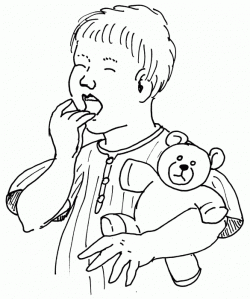Awesome! Simple act of yawning hard to explain
Q. Even the most mundane-seeming acts of an average day are anything but. Does that include yawning? –R. V. Winkle
A. "As I stretch and yawn before sleep, I remember that there are plenty of ideas around to explain why I'm doing this," marvels Roger Highfield of New Scientist magazine. Is it to cool the brain? Improve dwindling attention by drawing in more oxygen? Synchronize our mood with others and their contagious yawns? Another idea is that the baring of teeth during a yawn evolved as a form of protection from predators intent on ambushing a drowsy foe.
No one is sure if any of these– or some other– is correct. Yet such mysteries are the mental charm of life. "I close my eyes, satisfied that deeper understanding does not diminish life but instead amplifies my sense of awe," he says.
Q. In today's tough economy, what are a few money-based euphemisms gaining wider currency? –B. Bernake
A. Money is one of our most taboo topics, with people reluctant to talk about how much they earn, own, or owe, says Ralph Keyes in Euphemania: Our Love Affair with Euphemisms. In past eras, money wasn't as rich a source of linguistic evasion. Today, those who don't have enough money are "financially insecure," or with "limited means," or "a little short." Others are no longer "tapped out" but simply having "cash-flow" problems. As one strapped lady prefers, she's "under budget restraint."
Writers of annual reports are often master euphemizers: The recession is a "challenging economic environment," bad loans are "nonperforming assets," losses are "downward adjustments" or "revenue deficiencies." Those who used to "go bankrupt" now "file for Chapter 11 or Chapter 13"; they're not "broke" but "insolvent," with their ledger books showing "negative net worth." In a classic oxymoron, troubled firms suffer "negative growth" (they shrink).
"Such euphemisms don't just save face: they hide financial fragility, masking anxieties in a verbal fog,” Keyes writes. “Only when an economy collapses do we realize how many euphemisms helped pave the way for dubious transactions."
Q. For you Einsteins of the circus, what makes an aerialist's quadruple somersault so difficult and a "quad and a half" virtually impossible? –P.T. Barnum
A. It was July 10, 1982, at the Ringling Brothers Circus when aerial acrobat Miguel Vazquez let go his grip on the bar of his swing, tucked, rotated a full four times, then stretched out his arms to be caught by his brother Juan on another swing, says Jearl Walker in The Flying Circus of Physics. It was the first time a "quad" had been achieved before a circus audience, despite attempts at it since 1897.
The two requirements for a successful quad are rapid enough rotation and exact timing to pull out or risk rotating too quickly to be caught. The tuck position pulls in the body's center of mass, just as an ice skater pulls in arms and legs for a faster spin. But most aerialists cannot draw themselves in tightly enough to get the required rotation rate for a quadruple. As for timing, the aerialist must be able to eye his surroundings well enough to know how many times he has rotated, so he can come out just in time to be caught.
"However, the rotation speed for a quad (and also a quad and a half) is so large that the surroundings are too blurred for the aerialist to judge the rotation correctly. Thus the catch is almost never made," Walker writes.
~
Send Strange questions to brothers Bill and Rich at [email protected]
